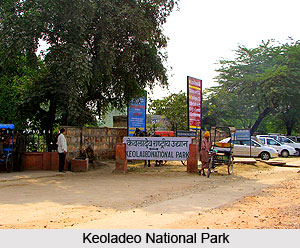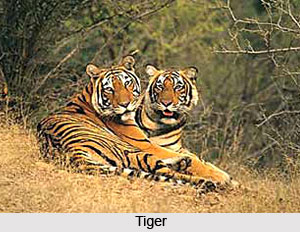 Famous worldwide as desert region the wildlife has miraculously thrived in this Indian state. Its diverse landscape has encouraged the survival of several species of wild animals. It is probably the only place in India where tigers dwell in the dry deciduous forests. The varied and limited vegetation is adequate to support the herbivores as well. The tourists might also be surprised to know that it is a haven for the migratory birds as well. Most of the present sanctuaries and national parks are erstwhile hunting grounds of the imperial people. The wild creatures are scattered from the semi green forests of Mount Abu to the deciduous forests and grasslands of Alwar and Bharatpur.
Famous worldwide as desert region the wildlife has miraculously thrived in this Indian state. Its diverse landscape has encouraged the survival of several species of wild animals. It is probably the only place in India where tigers dwell in the dry deciduous forests. The varied and limited vegetation is adequate to support the herbivores as well. The tourists might also be surprised to know that it is a haven for the migratory birds as well. Most of the present sanctuaries and national parks are erstwhile hunting grounds of the imperial people. The wild creatures are scattered from the semi green forests of Mount Abu to the deciduous forests and grasslands of Alwar and Bharatpur.
Presenting a complete contrasting picture to its landscape Rajasthan houses tigers and a host of endangered species. For nature travelers the wildlife in Rajasthan will be an aspect to explore. Most of the reserves, national parks and sanctuaries are dotted with temple ruins, castles and forts. These rubbles add to the enigma of the wilderness. The tourists, thus, can catch a glimpse of a lurking tiger while watching a cheetal hopping from place to place.
Ranthambore National Park: Nestled at the junction of Aravalli and Vindhya Ranges this is the most popular tiger reserve in Rajasthan. It is a haven for the large cats. The specialty of this park is that the travelers can watch the tigers preying or resting by the riverside. There are other predators as well in this park-leopards, jungle cats and other animals, such as, wild boars, bears, deer, crocodiles, langurs and a variety of birds.
 Sariska Tiger Reserve: It is yet another Tiger reserve that falls under the Project Tiger. Though it is mainly a tiger reserve other wild species are also widely available here. Safaris are the best ways to explore the reserve area.
Sariska Tiger Reserve: It is yet another Tiger reserve that falls under the Project Tiger. Though it is mainly a tiger reserve other wild species are also widely available here. Safaris are the best ways to explore the reserve area.
Keoladeo National Park: It is also popularly known as Bharatpur Sanctuary. It is probably one of the best dwelling place for the migratory birds. There are 375 species of birds that can be found here. The moment a traveler enters the national park he or she will be greeted by the cacophonous sound of the birds. On a closer look the bird lovers can catch a glimpse of local as well as migratory birds that come here to rear young ones.
Desert National Park: Major endangered species are found here. blackbucks, chinkaras and others have made this national park their natural habitat. The remarkable feature of this park is that 20% of its land is desert. It is a perfect example of the diverse physical conditions that describes Rajasthan.
Besides the above-mentioned wildlife parks there are other parks as well. These include
Tal Chapper Sanctuary, Darrah Sanctuary, Sajjangarh, Kumbhalgarh, Mount Abu and SitaMata Sanctuary. Promoting eco tourism has also become an integral part of the wildlife of Rajasthan.



















